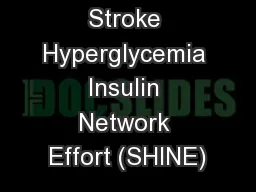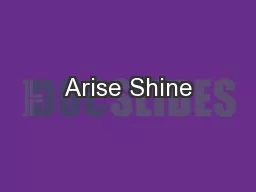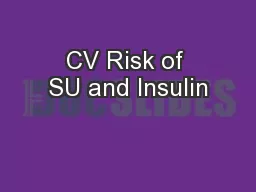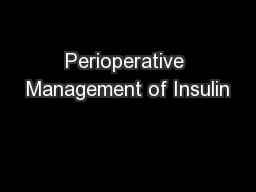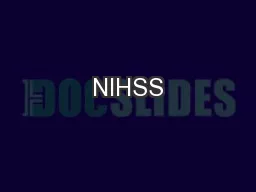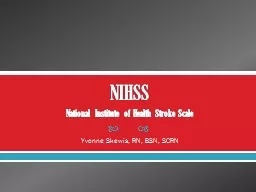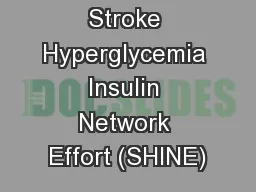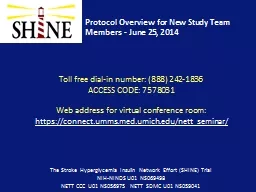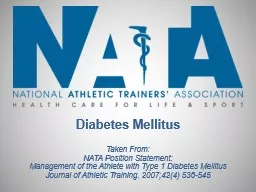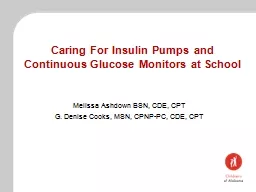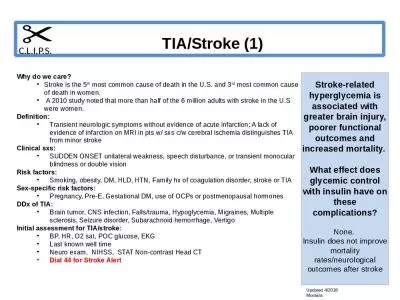PPT-Stroke Hyperglycemia Insulin Network Effort (SHINE)
Author : karlyn-bohler | Published Date : 2017-04-14
Trial Treatment Protocols Askiel Bruno MD MS Protocol PI Agenda General protocol for control group intervention group Discussion of meals H ypoglycemia protocol
Presentation Embed Code
Download Presentation
Download Presentation The PPT/PDF document "Stroke Hyperglycemia Insulin Network Eff..." is the property of its rightful owner. Permission is granted to download and print the materials on this website for personal, non-commercial use only, and to display it on your personal computer provided you do not modify the materials and that you retain all copyright notices contained in the materials. By downloading content from our website, you accept the terms of this agreement.
Stroke Hyperglycemia Insulin Network Effort (SHINE): Transcript
Download Rules Of Document
"Stroke Hyperglycemia Insulin Network Effort (SHINE)"The content belongs to its owner. You may download and print it for personal use, without modification, and keep all copyright notices. By downloading, you agree to these terms.
Related Documents

